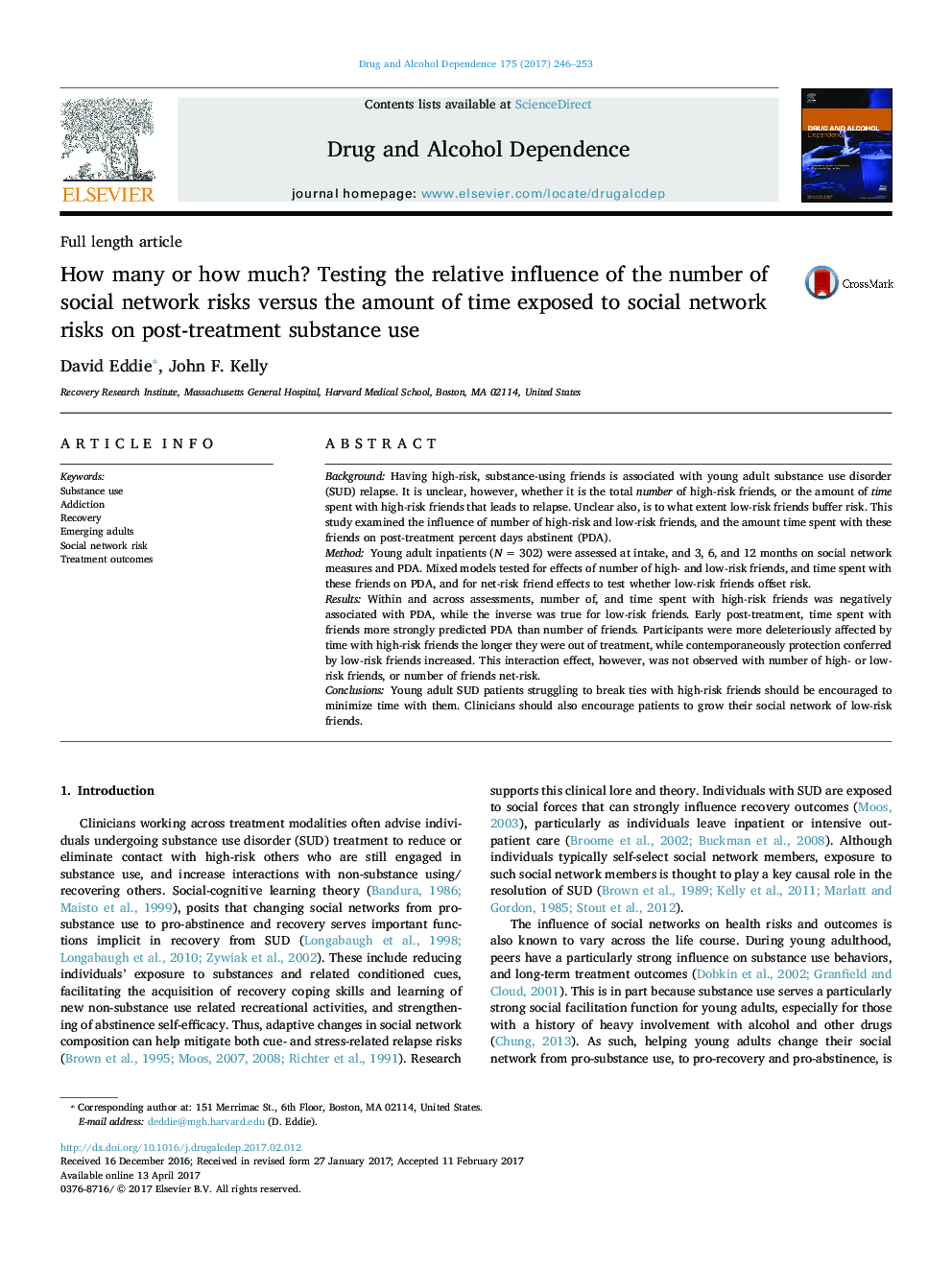| کد مقاله | کد نشریه | سال انتشار | مقاله انگلیسی | نسخه تمام متن |
|---|---|---|---|---|
| 5120091 | 1486116 | 2017 | 8 صفحه PDF | دانلود رایگان |
- High- and low-risk friends influence on substance use treatment outcome is tested.
- High-risk friends confer more risk the longer patients are out of treatment.
- Those struggling to lessen high-risk friend numbers should reduce time with them.
BackgroundHaving high-risk, substance-using friends is associated with young adult substance use disorder (SUD) relapse. It is unclear, however, whether it is the total number of high-risk friends, or the amount of time spent with high-risk friends that leads to relapse. Unclear also, is to what extent low-risk friends buffer risk. This study examined the influence of number of high-risk and low-risk friends, and the amount time spent with these friends on post-treatment percent days abstinent (PDA).MethodYoung adult inpatients (NÂ =Â 302) were assessed at intake, and 3, 6, and 12 months on social network measures and PDA. Mixed models tested for effects of number of high- and low-risk friends, and time spent with these friends on PDA, and for net-risk friend effects to test whether low-risk friends offset risk.ResultsWithin and across assessments, number of, and time spent with high-risk friends was negatively associated with PDA, while the inverse was true for low-risk friends. Early post-treatment, time spent with friends more strongly predicted PDA than number of friends. Participants were more deleteriously affected by time with high-risk friends the longer they were out of treatment, while contemporaneously protection conferred by low-risk friends increased. This interaction effect, however, was not observed with number of high- or low-risk friends, or number of friends net-risk.ConclusionsYoung adult SUD patients struggling to break ties with high-risk friends should be encouraged to minimize time with them. Clinicians should also encourage patients to grow their social network of low-risk friends.
Journal: Drug and Alcohol Dependence - Volume 175, 1 June 2017, Pages 246-253
